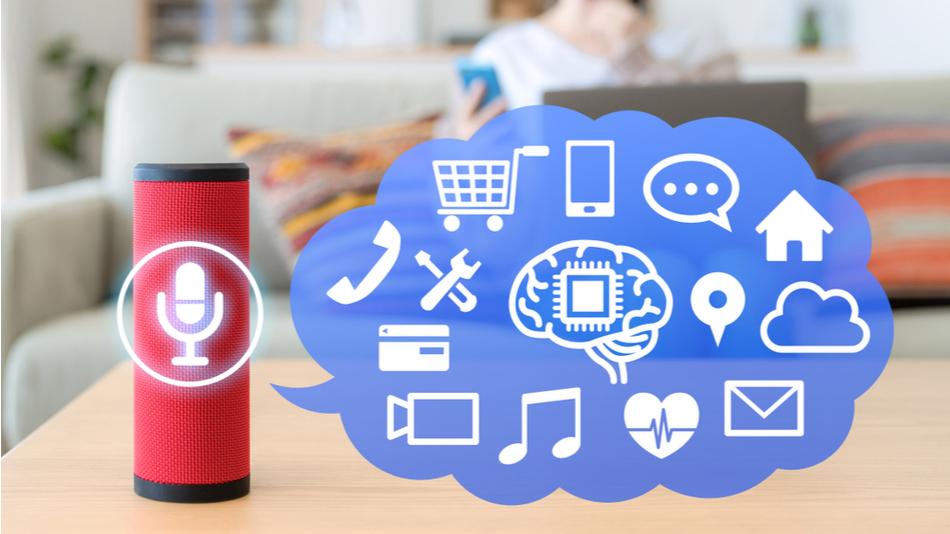No longer the stuff of science fiction, AI has forever changed the way we interact with computers. User interface paradigms have evolved to be easier and more intuitive.
First, we had text-based command lines which required extensive knowledge of an esoteric vocabulary of jargon and scripting language to use. After that we moved on to graphical user interfaces that relied on computer mice, and then the touch screen took off. Now, the latest form of interaction is through simple voice commands delivered to an AI assistant, machines intelligent enough to not only understand your needs when related through simple language, but even to anticipate them.
For both consumers and retailers, this offers an enormous potential for greater ease of use and more streamlined retail processes. The entire business of retail hinges on a store’s ability to have the product customers want when they want it, and retail outlets are constantly looking for new ways to anticipate the needs of shoppers in order to maintain their existing client base and drive new repeat business. If a machine learning based AI assistant such as Google Assistant and Amazon’s Alexa can anticipate the needs of users and make it simpler for those needs to be articulated, then it can become easier for retailers to work ahead of their customers and better prepare for the ever-changing demands of the market.
What’s an AI Assistant?
First popularized through Apple’s Siri application which came integrated with each iPhone 4S, the AI (or virtual) assistant is a program which can respond to simple spoken or typed commands or requests and perform tasks or return information. At first Siri was mostly used as an alternative to more conventional web search and for light tasks like note-taking and text messages. An AI assistant was mostly a fun thing to show off to your friend with an older phone: unlike more impersonal interfaces, virtual assistants can inject some personality into their interactions, telling jokes and communicating through wry observations.
That is, until Amazon’s Alexa hit the scene. First bundled in the company’s proprietary Go smart speaker, this assistant has found its way into many other consumer electronics. Two things set Alexa apart from the competition: it’s designed from the start to be controlled just through voice, and it’s plugged right into the Amazon retail ecosystem.
Alexa, Do My Shopping
With Amazon’s acquisition of Whole Foods, the online retail juggernaut has become a strong player in the grocery market. In addition to adding a formidable physical presence, Amazon was also able to expand its delivery services and bring their own services into the brick-and-mortar grocery space. With Alexa having the potential to be a primary point of contact for home shoppers, it was only a matter of time before they were brought together.
Customers can now shop their local Whole Foods right from their home with the help of their Alexa-enabled devices. They need only tell Alexa to add their needed items to their cart. Even something as vague as “Alexa, add cheese” will work: the assistant is smart enough to pick one from your shopping habits. It’s important to remember that brick-and-mortar outlets in the modern era are not just places to shop, but also launching points for other services and testing grounds for new tech. With Alexa available on smartphones and an increasing variety of smart home devices, integration with Whole Foods offers Amazon an opportunity to better tie their services and products together, creating a more seamless relationship between the brick-and-mortar and online experience.
The Logical Next Step
While these assistants are useful to shoppers looking to purchase items from home or on the go, what about the in-store experience? Some developers are experimenting with Alexa-enabled virtual help centers which can not only point shoppers in the right direction, but also answer questions and assist customers with making the right choices. Similar tech has been piloted with Macy’s On Call application, which leveraged IBM’s Watson to enable AI assisted shopping. While not a replacement for in-store associates, such initiatives can make it easier for quick, simple questions to be answered, and also free up associates to spend more time on more complex customer needs and merchandising projects.
We are still a way off from fully automated retail, where stores are entirely autonomous and customers can purchase items without needing to speak to anyone at all. Besides, this is not ideal for many. One of the advantages of brick-and-mortar is the human element, and if anything virtual assistants and AI are meant to augment and emulate the in-store associate experience, by putting more and better information at the hands of both customers and workers
If you’d like to know how we’re helping revolutionize retail with data, start here.


